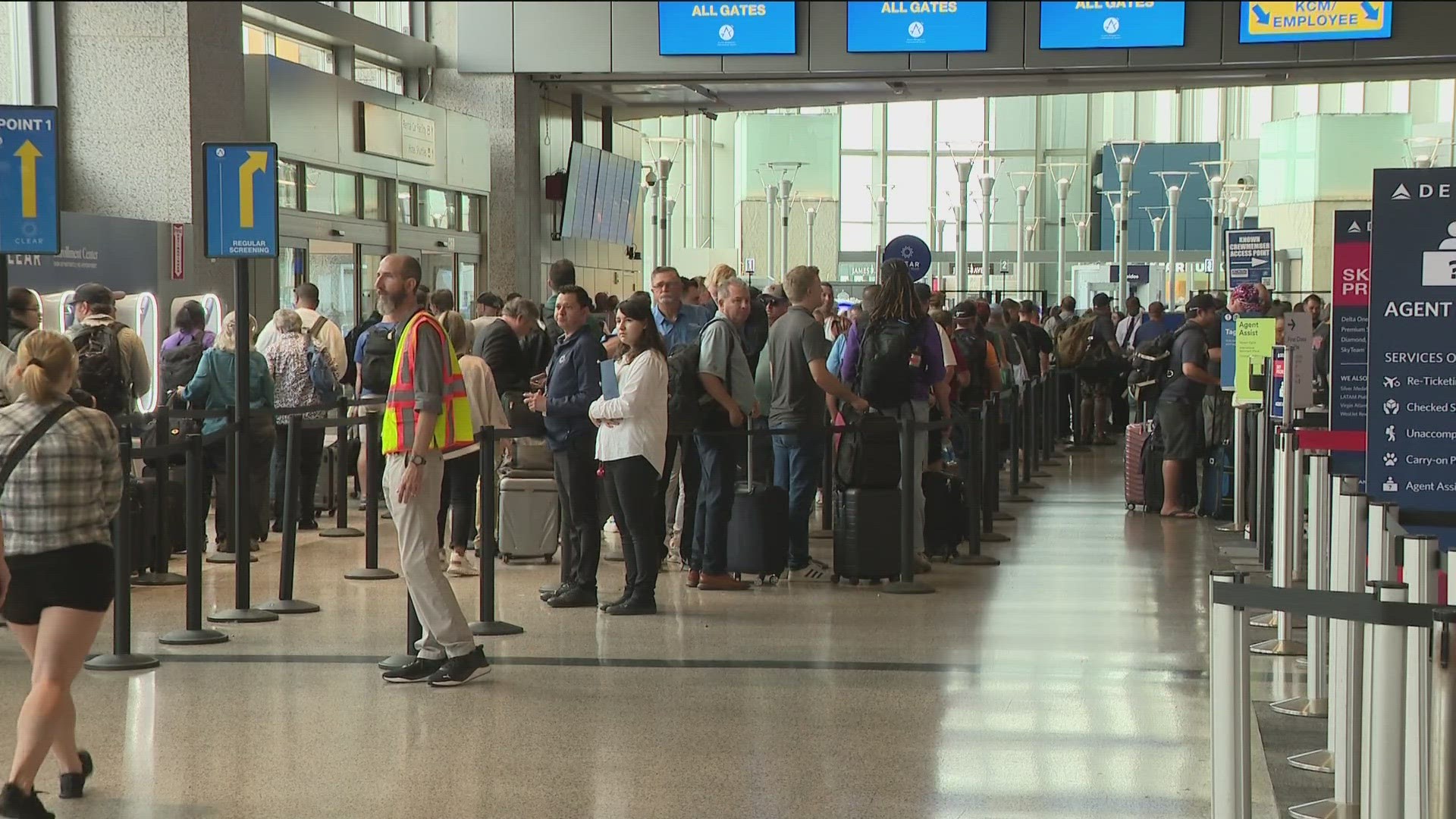AUSTIN, Texas — Editor's note: A previous version of this story incorrectly stated that AUS is the only airport to achieve "neutrality." AUS is the only airport with a Level 3+ rating in North America. AUS is one of five total airports that are carbon neutral in the country.
For the third year in a row, the Austin-Bergstrom International Airport (AUS) has been certified as carbon neutral. AUS is one of five airports in the U.S. to achieve “neutrality” or higher levels of certification through the Airports Carbon Accreditation Program.
“This carbon neutrality accreditation is high on our environmental brag list because it shows that during our airport’s busiest year ever (with over 21 million passengers), we were able to maintain a carbon neutral operation,” the airport said in a press release. “If you think about the increasing number of passengers, you can also think about it in terms of an increase in energy consumption: energy supplied in the terminal for more passengers, the number of shuttles buses in operation on the airport’s campus, more staff working in the terminal and other buildings on campus, and so on and so forth.”
The Airport Carbon Accreditation Program gave the Austin airport a Level 3+ accreditation, which means the airport spends money on carbon reduction projects for any emissions that can’t be fully eliminated. The Austin airport shares the credential with Ottawa Macdonald-Cartier International in Canada, the only other North American airport with the same rating.
Projects to reduce emissions at AUS include airport shuttles that run on renewable natural gas, solar energy use around the airport and zero-emission ground service equipment.
“You’ll find electric shuttles, waste management systems, water reclamation initiatives, eco-partnerships, and other efforts throughout the airport’s sustainable ecosystem that keep us 100. 100% carbon neutral, that is,” the airport said. “Keep it green, y’all.”
The airport said its environmental and sustainability portfolio includes:
- A partnership with Austin Energy to generate 1.8 megawatts of renewable solar energy on the airport campus which provides power to the airport and 160 local homes through the Community Solar Program
- A partnership with Signature Flight Support to accept the first-ever delivery of Sustainable Aviation Fuel to AUS earlier this year
- Using 100% renewable energy in the Barbara Jordan Terminal through Austin Energy’s GreenChoice Program
- Using renewable natural gas to power AUS’s shuttle bus fleet and piloting a renewable natural gas credit sharing program with Clean Energy to aid airport partners in reducing their emissions
- Achieving an Austin Energy Green Building three-star rating on the newest completed airport facility, the Airport Career and Development Center
- Purchasing renewable energy and carbon offsets from sustainable sources and promoting The Good Traveler program to AUS passengers
- Establishing the AUS Food Rescue Program, which donates unused perishable food from concessions to Keep Austin Fed, and a campus-wide composting and recycling program
- Partnering with airlines to support electric-powered airline ground service equipment
Still, AUS has faced criticism recently over the environmental impacts of the airport’s expansion, including planned jet fuel tanks. This month, a jet fuel supplier announced plans to build a dedicated pipeline to supply fuel to the airport.
In February, Austin's Airport Advisory Commission said the new tank facility should be up and running by next October, despite concerns from environmental advocates and people who live near the airport.

